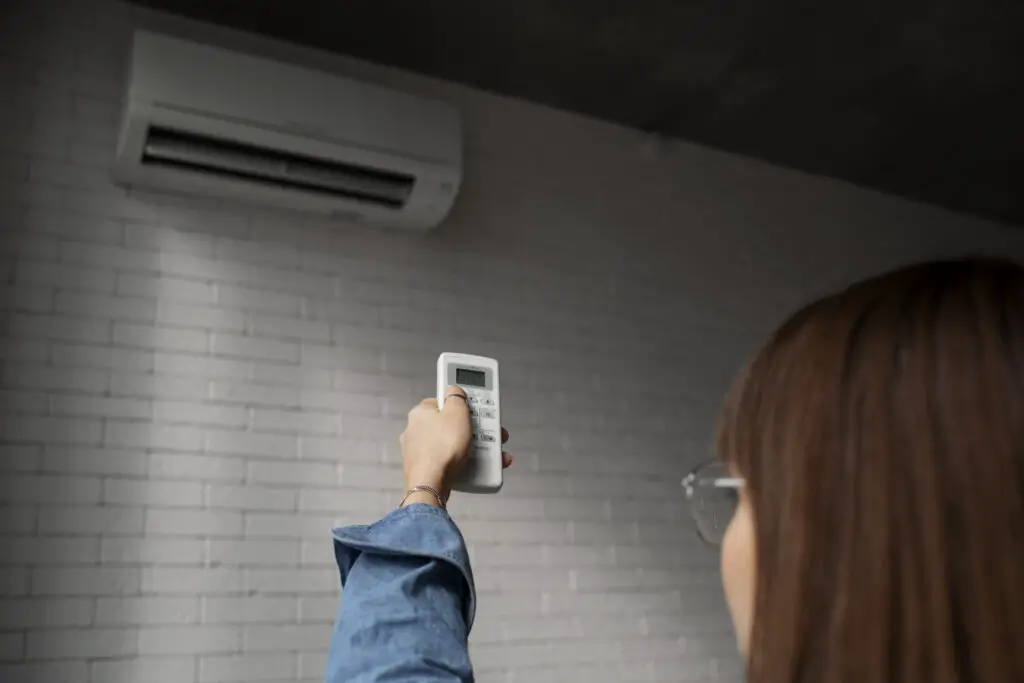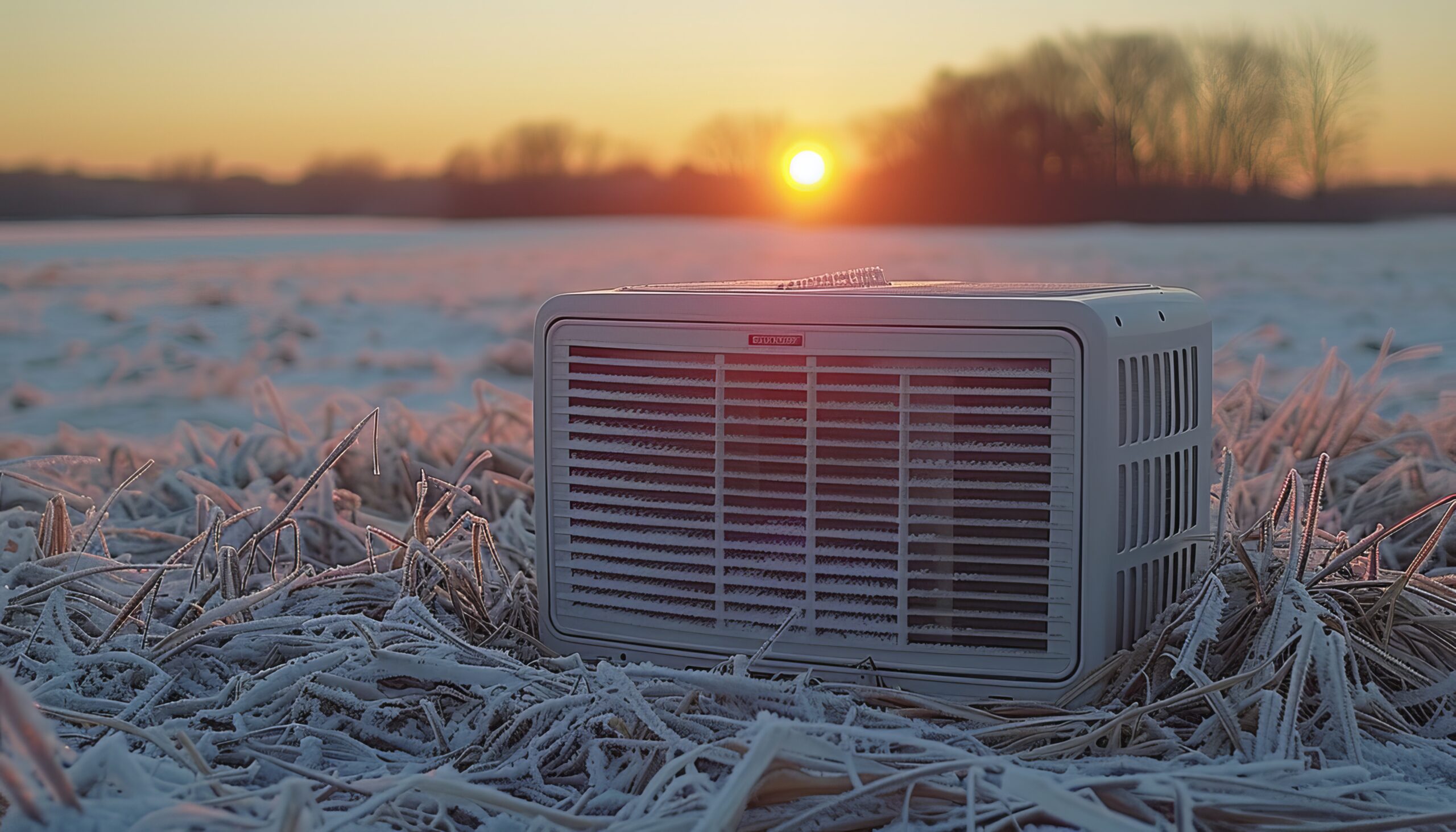Ever found yourself in a frosty dilemma about using your air conditioner during the winter months? You’re not alone. It’s a question that’s puzzled many, especially those living in regions with extreme temperature fluctuations.
This article is designed to shed light on this hot topic. We’ll investigate into the science behind air conditioning systems, their functionality during colder months, and the potential benefits they may offer. So, if you’re on the fence about firing up your AC this winter, stick around. You might just find the answers you’re seeking.
Benefits of Using an Air Conditioner in Winter

Energy Efficiency
Harnessing your air conditioner in winter may seem counterintuitive, but it isn’t. In fact, utilizing your AC during the lean, cold months can aid in energy conservation. Modern air conditioners double as heat pumps, absorbing heat from the exterior and pumping it inside, which can prove efficient compared to traditional heating systems. How? Instead of generating heat from scratch, they transfer existing heat – a process requiring significantly less energy.
In homes with a fully integrated HVAC system, the winter months often provide an opportunity for energy savings. For instance, when outside temperatures dip to 7 degrees Celsius and lower, the energy required to heat your property can intensify dramatically. Here, the air conditioner’s heat pump mode can kick in, ensuring an efficient supply of warmth at a fraction of the usual energy costs. Notably, this feature isn’t available with all units, so check your AC specifications to confirm.
Maintaining Air Quality
Winter often implies closed doors and windows, leading to a buildup of indoor pollutants. But did you know your air conditioner can help maintain air quality? Yes, it’s more than a cooling contraption. Air conditioners are equipped with filters that clean your indoor air, eliminating common pollutants like dust mites, pet dander, and mould spores.
Besides, air conditioners help control humidity levels. In winter, when heating systems are cranked up, the air indoors can become excessively dry, leading to nose, throat, and skin discomfort. Here, running your AC periodically can help maintain optimal humidity levels, ensuring a comfortable indoor environment.
How Air Conditioners Work in Cold Weather
Bridging from previous topics, let’s investigate ascertain how an air conditioner functions during frosty times. This section will unravel two key aspects: the science of heat pump technology and the indispensable limitations and considerations to mull over.
Heat Pump Technology
In the heart of winter, it might seem counterintuitive to crank up your air conditioner. Reality, but, flips this assumption on its head. Advanced air conditioning systems, equipped with heat pumps, have the ability to reverse their cooling process, becoming sources of warmth. This ingenious trait comes from a special valve that can switch the direction of refrigerant between the indoor and outdoor units.
In layman terms, instead of extracting heat from your home and expelling it outdoors, this technology finds latent warmth from the outside air, even in chilling conditions as low as -15 degrees Celsius, and transfers it indoors. This mechanism conserves more energy compared to traditional heating systems, as it’s merely moving heat rather than generating it from scratch. For instance, heat pumps use 1 unit of electricity to transfer 3 units of heat from outdoors to indoors.
So in winters, it’s not just the classic fireplace that can help you keep your home cosy, but your trusty air conditioner too.
Limitations and Considerations
No technology comes without its limitations, and heat pumps are no strangers to this. Albeit impressive, their effectiveness wanes as the outside temperature drops to extreme levels, say, below -15 degrees Celsius. In such scenarios, the system’s ability to extract heat diminishes and it might switch to auxiliary heating methods which can be less energy-efficient.
Also, using an air conditioner in winter requires routine and professional maintenance to ensure optimal performance. Keep in mind the need for regular checks on refrigerant levels, filter cleanliness, and overall system functions. This would avert any damages caused by low temperatures, ensuring your unit runs smoothly all year round.
Drawing on these considerations, it becomes evident that using an air conditioner in winter is not only possible but also practical, provided the right precautions and maintenance tactics are in hand. But, it remains paramount to assess the local climate, power consumptions, and individual requirements before making this decision.
Setting Up Your Air Conditioner for Winter Usage
Leveraging your air conditioner for year-round comfort involves understanding the right way to set it up for winter use. We move on to talk about practical methods to ensure your air conditioning system functions efficiently during colder months, touching on pertinent topics like adjusting thermostats and regular maintenance.
Adjusting Thermostats
On meeting cold weather head-on, focus first on regulating your thermostat settings. While heating systems often come into play when temperatures plummet, an air conditioner equipped with a heat pump plays a pivotal role. If your air conditioner has a reverse cycle, exploit it. Unlike usual air conditioning triggering a cooling effect, flipping the unit into reverse mode extracts heat from the outside air pushing warmth indoors.
Approach setting the thermostat with consideration for your comfort and energy savings. A slight shift in temperature control can make a remarkable difference. Experts suggest an ideal indoor winter temperature hovers around 20-22 degrees Celsius. Keeping it higher triggers excessive energy consumption, impacting your utility bills.
Regular Maintenance Tips
Routine attention towards maintenance remains key in ensuring your air conditioner’s winter readiness. Prioritise inspecting the filters, fan, and coils. Debris accumulation over time restricts airflow, reducing the system’s efficiency. Clean filters enhance performance, later saving energy.
Periodic inspections should also cover the heat exchange coils. A well-maintained coil contributes to better heat transfer, crucial for the colder months. Similarly, ensure your fan is in good shape. A properly functioning fan aids heat distribution, essential for maintaining desirable indoor temperatures in winter.
Pair with experts for regular professional checks. They command the skills and tools needed to spot potential issues and fix them before they escalate into significant problems. Also, they offer valuable advice tweak your system’s performance in sync with the season’s demands. Regular, expert maintenance leads to optimal performance, extending your air conditioner’s lifespan and saving energy. Keep in mind there’s no one-size-fits-all approach to setting up your air conditioner for winter use. Factors like your area’s climate conditions, your home’s insulation levels, and your unit’s age and model play critical roles. Tailor your action plan accordingly. Practice proactive upkeep, adjust settings thoughtfully, and reap the benefits of a warm and cosy home during winter.
Alternatives to Using an Air Conditioner in Winter

Let’s investigate into alternatives to air conditioning during winter. Besides the typical use of heaters, there are other methods you can employ to stay warm and cosy while also considering energy efficiency.
Portable Heaters
Portable heaters are a top-notch choice for providing targeted warmth without bearing the cost of heating the entire house. With a variety of types such as convection, ceramic, and infrared heaters, you can select the one that suits your needs the most. For example, a convection heater warms up the entire room whereas an infrared heater provides instantaneous, focused heat. But, it’s critical to remember safety precautions are pivotal when using portable heaters as they can become dangerously hot to the touch and may pose a fire hazard if not handled carefully.
Insulation and Weatherproofing
On top of heating, improving your home’s insulation and weatherproofing is an essential step in maintaining a warm environment during winter. Consider a top-to-bottom approach, starting from loft insulation, cavity wall insulation, down to floor insulation. They’ll block cold air from entering your home, retain the heat inside, and besides, help you save on energy costs. Weatherstripping around windows and doors presents an affordable and efficient way to prevent drafts. You might also want to look into thermal curtains or blinds — they not only add an aesthetic appeal to your rooms but also serve as an additional layer of insulation.
Integrating these alternatives with the proper use of an air conditioner can pave the way for a cosy and warm home milieu during the winter months. Remember, the key is to strike a balance between comfort, cost, and energy efficacy.
Conclusion
So, you’ve seen how air conditioning can be a viable option for heating your home in winter. The magic of heat pumps allows you to enjoy a warm, comfortable indoor climate even when the weather outside is freezing. But it’s not the only solution. Portable heaters can give you the targeted warmth you need, and better insulation and weatherproofing can help keep that heat in. Eventually, the best approach combines these methods. By using air conditioning alongside other heating options, you can achieve a cosy home environment without very costly or wasting energy. It’s all about finding that perfect balance between comfort, cost, and energy efficiency.
